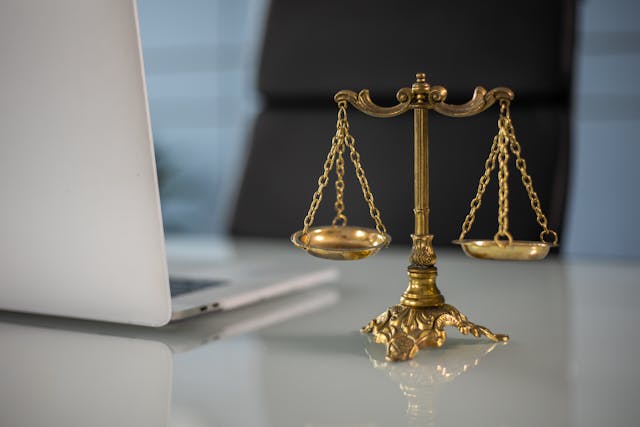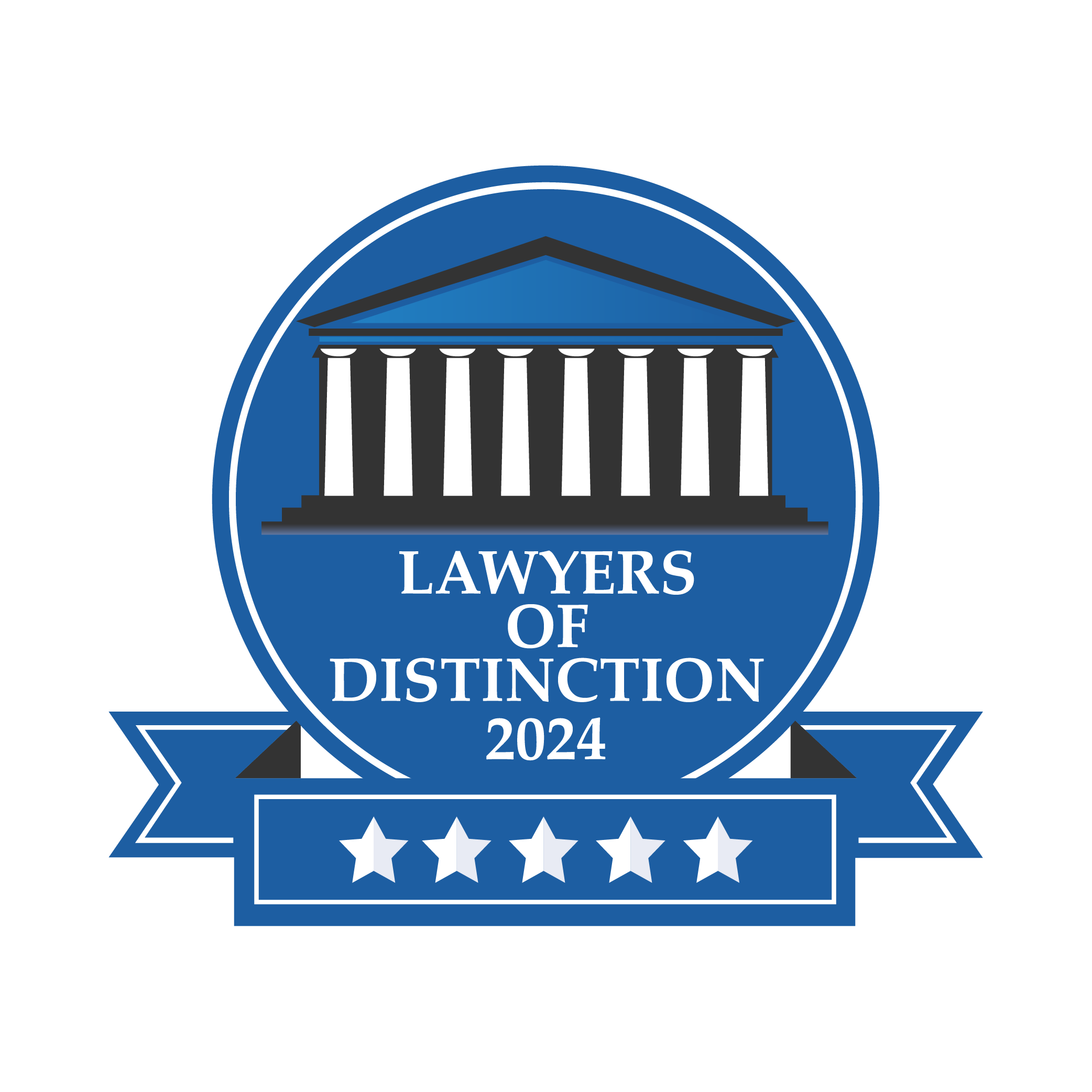If you’re injured in an accident because of someone else’s negligence, you could be entitled to recover compensation for your injuries and losses. This could result from a car accident, work injury, slip and fall, dog bite, or any other situation caused by another person’s careless behavior. A Las Vegas personal injury lawyer can help you understand your legal rights and pursue the compensation you deserve.
One important thing to realize about personal injury cases is that you may be considered to be partially at fault for your own injuries. In these cases, Nevada still allows you to recover compensation up to a point, depending on just how much at fault you are. This is known as comparative fault (or comparative negligence).

40+ Years of ExperienceMillions RecoveredNo Win No Fee
Nevada’s Modified Comparative Fault Rule Explained
Find out when you can recover damages if partially at fault and how a Las Vegas personal injury lawyer can help maximize your compensation.
What is Modified Comparative Negligence in Nevada?
Nevada follows a modified comparative negligence system under NRS 41.141. This law allows injured victims to recover compensation as long as they are not more than 50% at fault for the accident.
Here’s how it works:
- If you are 50% or less at fault, you can still recover damages.
- Your compensation is reduced by your percentage of fault.
- If you are 51% or more at fault, you cannot recover any compensation under Nevada law.
Example
If you are awarded $100,000 in damages but found to be 30% responsible, your recovery would be reduced by 30%. You would receive $70,000.
This rule, often called the 50 percent bar rule in Nevada, ensures that those who are primarily responsible for an accident can’t recover damages, while still allowing partially at-fault victims to receive fair compensation.
Understanding NRS 41.141
Under NRS 41.141, comparative negligence applies to any action for death or injury to persons or property when negligence is asserted as a defense.
Key points of the statute:
- A plaintiff may recover damages only if their negligence was not greater than that of the defendant(s).
- Juries must determine the percentage of fault for each party involved.
- Each defendant is only liable for their percentage of negligence (“several liability”).
- If a defendant settles before trial, their share of fault and settlement amount cannot be used against other defendants at trial.
In plain English, the law ensures fair apportionment of responsibility, so no single party pays more than their share of fault.
How Fault Is Divided After an Accident in Nevada
If you’re injured and decide to file a personal injury claim against the party you believe is responsible, it’s important to understand how fault is determined. This gives you an idea of what evidence is needed and can help you determine if you might also be partially at fault.
So, who decides fault and how is this done?
Insurance Companies
In the early stages, insurance adjusters will collect statements and examine evidence to assign blame. During settlement negotiations, it’s often adjusters who make the first call about each driver’s fault.
Judges or Juries
If your claim doesn’t settle and the case goes to trial, the responsibility switches to a judge or, more often, a jury to allocate fault based on the facts presented.
What Factors Are Considered When Determining Fault?
To determine who is liable for the accident, insurance adjusters or judges and juries will use evidence to make this decision. This often includes:
- Police Reports
- Witness Statements
- Photos and Videos
- Expert Testimony
The best way to prove that someone else was at fault for the accident and your injuries is to speak with a personal injury lawyer as soon as possible.
Can Multiple People Share Blame?
When more than two people are involved in an accident or injury claim in Nevada, the rules about who is to blame and who has to pay get even more complex. Nevada personal injury law allows fault to be divided among several parties, each being assigned a percentage showing how much responsibility they have for the accident.
Nevada uses “joint and several liability.” Put simply, if more than one person was negligent and they are all partially responsible, you can potentially recover your full losses from any defendant if others can’t pay. They would then have to sort out reimbursement between themselves and on their own.
If one party settles with you before trial, the court will subtract their agreed-upon fault percentage from the case. For example, if you have a three-car accident and one driver settles early for 20% of the blame, that 20% will be reduced from your final award so that you don’t recover that money twice essentially.
When the Modified Comparative Negligence Rule Doesn’t Apply
There are some situations where the Nevada modified comparative negligence rule simply doesn’t apply.
1. Children Under 7
If a child is under age 7, Nevada’s negligence law treats them as incapable of being legally at fault for an accident. A defendant cannot blame the child to reduce their level of fault.
2. Willful or Intentional Misconduct
Nevada’s comparative negligence rules only apply to ordinary carelessness, not when harm was done on purpose. If a defendant acted with willful, wanton, or intentional misconduct, they cannot avoid liability by arguing that the injured person was partly responsible.
3. Criminal Acts Affecting Fault
When an injury happens because someone was engaged in illegal activity, Nevada often blocks them from recovering damages, even if someone else shares blame. The law here depends heavily on the exact situation, so this is an area where advice from an attorney is vital.
4. Claims Where Negligence Isn’t Disputed
Sometimes everyone agrees about how the injury happened or both sides admit who was careless and who wasn’t. In cases like these, the rules for comparative shared fault may not come into play at all.
Being aware of these exceptions ensures you don’t miss chances for recovery in your personal injury claim.
How to Prove the Other Party Was More at Fault
To minimize your share of fault and maximize recovery, you need strong evidence. This may include:
- Eyewitness statements
- Surveillance or dashcam footage
- Expert witness reports (e.g., accident reconstruction)
- Police and medical records
- Photos of the scene and property damage
A skilled personal injury lawyer will know how to build a case that shifts more blame to the opposing party and protects your right to compensation.
What If the Insurance Company Blames You?
Insurance companies routinely use Nevada’s comparative fault system to reduce payouts. Adjusters may argue that you share more blame than you actually do.
If this happens:
- Don’t admit fault.
- Don’t give recorded statements without legal advice.
- Contact a Las Vegas personal injury lawyer immediately.
Your attorney can push back with evidence and handle communications to ensure the correct level of fault is assigned.
Modified Comparative Fault Matters in Nevada Car Accident Claims
Most personal injury cases in Nevada involve car accidents, and comparative fault plays a huge role in how much you can recover.
Common examples:
- Two drivers both speed through an intersection
- One driver rear-ends another, but the front driver had faulty brake lights
- A pedestrian crosses outside a crosswalk but a driver is distracted
Even if you share some responsibility, you can still recover compensation as long as you’re 50% or less at fault.
An experienced Las Vegas car accident attorney can help prove the other driver’s negligence.
Do You Need a Lawyer to Win These Cases?
Navigating Nevada’s fault laws can feel stressful when you’re already dealing with pain, missed work, and medical appointments. An experienced personal injury lawyer plays a significant role in helping you get justice and compensation. Here’s how:
- Investigate the crash or incident
- Collect and preserve critical evidence
- Work with experts to establish fault
- Negotiate aggressively with insurers
- Take your case to court if needed
When compensation depends on percentages, even a small shift in fault can mean thousands of dollars in or out of your pocket.
Talk to Valiente Mott Injury Attorneys Today
If you’ve been injured in an accident and the insurance company is trying to blame you, don’t fight alone.
At Valiente Mott Injury Attorneys, our Las Vegas personal injury attorneys understand Nevada’s modified comparative fault laws and know how to protect your rights.
You pay no fees unless we win, and we’ll fight to get you every dollar you deserve.
Call us today or fill out our online form schedule a free consultation to discuss your case.

